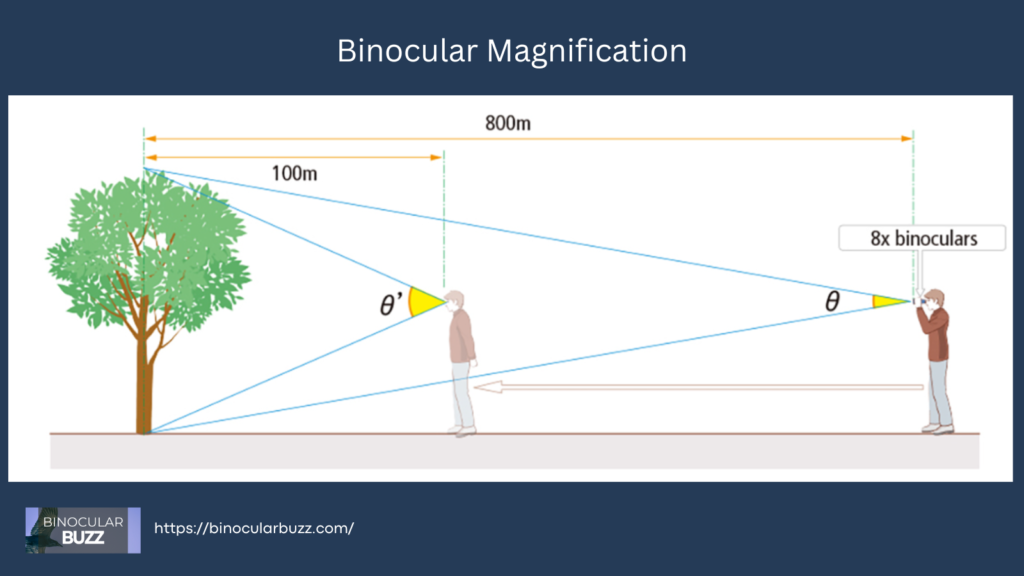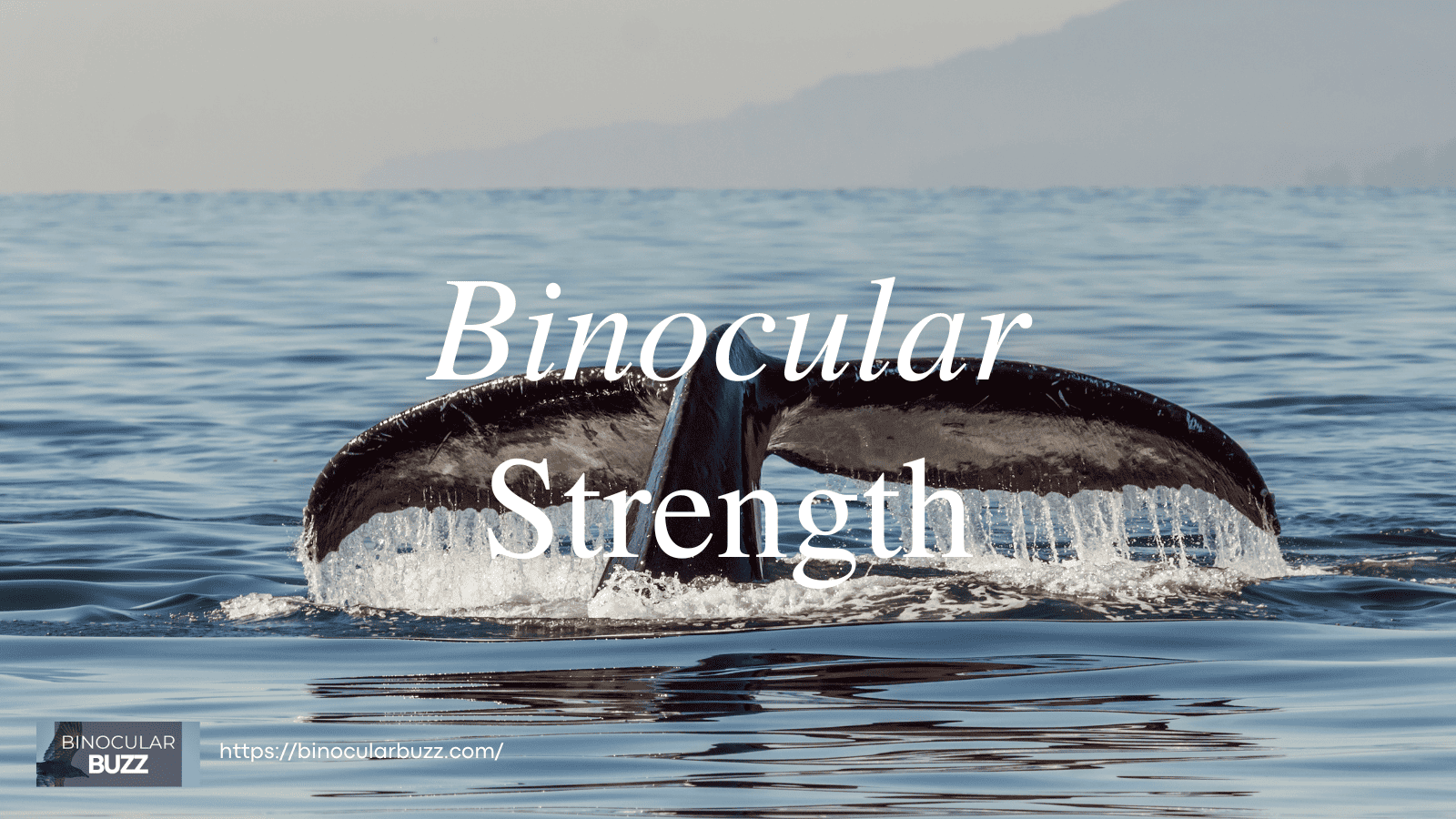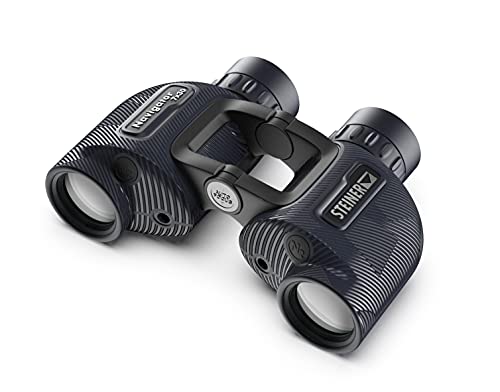Best Binocular Strength for You: A Practical Guide [2024]
Are you tired of squinting and straining your eyes to get a closer look at that beautiful bird perched on a tree branch? Possibly, you do not have the required binocular strength. What is binocular strength and more importantly, what is the best binocular strength for you?
It is not unusual for novice birdwatchers or first time binocular buyers to get stuck with the less than ideal binocular strength. This can really mar your long distance viewing pleasure.
In this blog post, I am going to guide you so that you may find the best binocular strength, whatever your hobby might be. Binocular strength is an important binocular number and you need to keep it on your list when shopping for a new pair of binoculars.
This handy guide will help you navigate the world of binoculars and make an informed decision on choosing one with the binocular strength that is best for you!
This site participates in the Amazon Services LLC Associates Program designed to give sites like ours a way to earn advertising fees by linking to products on Amazon.com at no additional cost to you. I appreciate your support. Thank you!
What is Binocular Strength?
Binocular strength, is a combination of binocular magnification and objective lens size. It is denoted by a number followed by an “x”, such as 8x or 10x. This number represents the level of magnification as well as the amount of light entering the binocular.
Binocular strength is a good indication of what you can view with a binocular. As an example, typically a 10X42 has a higher binocular strength than 8X32 and will result in a better viewing experience.
Binocular Magnification
Binocular magnification is determined by the ratio of the focal length of the objective lens to the focal length of the eyepiece. For example, if the objective lens has a focal length of 200mm and the eyepiece has a focal length of 20mm, the binoculars would have a magnification of 10x.

Image Courtesy NIKON
Objective Lens Diameter
The objective lens diameter is simply the diameter of the objective lens in millimeters (mm). It typically ranges from 20mm to 50mm but can be higher for specialist binoculars.
Binocular Strength
The binocular strength is a combination of the binocular magnification and the objective lens diameter. So, for example a pair of binoculars with a strength of 8×32 would have a magnification of 8x and an objective lens diameter of 32mm.
For a given magnification, larger objective lenses yield a brighter image in dim light, but also result in a bulkier, heavier pair of binoculars.
ORION
Choosing the Right Binocular Strength
High binocular strength need not be the best binocular strength for you. The right binocular strength for you depends on the intended use.
Remember high binocular magnification can let you see more details but also result in a narrower field of view and a shaky image. Similarly a larger objective lens will give you brighter images but will increase the weight of the binoculars.
You need to find the sweet spot, when it comes to binocular strength. The table below gives the binocular strength and the viewing activity for which it is best suited.
| Magnification Level | Objective Diameter | Suggested Activity |
|---|---|---|
| 6x – 7x | 25mm – 30mm | Hiking, Camping, Sporting Events, Concerts |
| 6x – 7x | 32mm – 35mm | Birding, Travel, Sporting Events, Concerts, General Purpose |
| 8x – 9x | 25mm – 30mm | Hiking, Camping, Sporting Events, Concerts |
| 8x – 9x | 32mm – 35mm | Birding, Travel, Sporting Events, Concerts, General Purpose |
| 8x – 9x | 40mm – 42mm | Birding, Travel, General Purpose |
| 10x – 12x | 25mm – 30mm | Hiking, Camping, Sporting Events, Concerts |
| 10x – 12x | 32mm – 35mm | Birding, Travel, Sporting Events, Concerts |
| 10x – 12x | 40mm – 42mm | Birding, Travel, Hunting |
| 10x – 12x | 50mm – 56mm | Birding, Astronomy, Hunting, Law Enforcement |
| 15x – 16x | 32mm – 35mm | Travel, Sporting Events, Concerts |
| 15x – 16x | 50mm – 56mm | Astronomy, Hunting, Law Enforcement |
| 20x – 25x | 50mm – 56mm | Astronomy, Seawatch, Law Enforcement |
| 20x – 25x | 60mm | Astronomy, Seawatch, Law Enforcement |
| 20x – 25x | 70mm | Astronomy, Seawatch, Law Enforcement |
| 20x – 25x | 80mm | Astronomy, Seawatch, Law Enforcement |
| 20x – 25x | 100mm | Astronomy, Seawatch, Law Enforcement |
Range of Binocular Strength
Here is a short list of pros, cons and best use for:
Low Strength Binoculars
Low Strength Binoculars will typically range between 6×25 and 8×30.
Pros:
- Wider Field of View: Binoculars with lower strength tend to offer a wider field of view. Great for observing a broader area without needing to move the binoculars frequently.
- Ease of Use: Lower magnification binoculars are often easier to use, as they are more forgiving and less prone to image shake.
- Compactness: Low strength binoculars are compact and lightweight making it easier to carry them around.
Cons:
- Low Light Gathering: Low strength binoculars have small objective lens and as a result will not perform very well in low light conditions such as dawn or dusk.
- Lacks Details: Do not expect to capture fine deals with low strength binoculars as the magnification is low.
- Not Suitable for Very Long Distance Viewing: You are certainly not going to find low strength binoculars very useful for stargazing or astronomy.
Best Use:
- Hiking & Camping: Low strength binoculars are well-suited for hiking & camping due to their low weight, compactness and wide field of view.
- Traveling & Cruising: For the same reasons low strength binoculars make excellent companions when you plan a holiday or a cruise.
- Watching Sports Events: Low strength binoculars are a good choice for observing sports events, such as football or baseball games. A wider field of view lets you follow the action across the field or court without missing key moments.
- Concerts and Theater: For indoor events, where the viewing distance is relatively close and a wider field of view is desirable. The compactness helps too.
Medium Strength Binoculars
Medium Strength Binoculars will typically range between from 8×32 to 10×42. This is in fact the sweet spot of binocular strength as it caters to the most popular activities that require the use of binoculars.
Pros:
- Enhanced Detail: Medium strength binoculars have binocular magnification that is high enough for most popular long distance viewing activities.
- Decent FOV: They strike a decent balance between magnification power and field of view, making them versatile for various activities ranging from birdwatching to sports events.
- Good Viewing Range: With medium strength, these binoculars are suitable for observing objects at moderate to long distances. They also work well in low light situations.
- Portability: Medium strength binoculars are usually of a weight that makes them easy to carry around, even for extended periods without causing fatigue.
Cons:
- Image Stability: Due to higher magnification, medium strength binoculars are more susceptible to image shake. However, an experienced birdwatcher or hunter will not find it difficult to hold it steady.
- Cost: Expect to pay over $100, even for basic models and in the range $200 to $600 for advanced models with good optics.
Best Use:
- Birdwatching: Medium strength binoculars are perfect for the popular hobby of birdwatching. They have enough magnification to observe fine details of birds while still maintaining a wide enough field of view to track their flight movement.
- Hunting: Just as in the case of birdwatching, medium strength binoculars are terrific for hunters. They can easily spot their prey while keeping an eye on a wide swath of the terrain.
- Wildlife Observation: Whether observing wildlife in nature reserves or during safaris, medium strength binoculars have the required magnification to capture details of animals from a safe distance.
Large Strength Binoculars
Large Strength Binoculars are those that are larger than 10×42. These are generally used by professionals and specialists.
Pros:
- High Magnification: Large strength binoculars have very high magnification, starting from 12x and going up to 25x. Such high magnification permits you to observe distant objects with exceptional detail and clarity.
- Large Objective Lens: The unusually large objective lens diameter facilitates light gathering in low light conditions. Diameters can range from 50mm to 100mm. No wonder such binoculars are favored by astronomers and law enforcement personnel.
- Precise Observation: Large strength binoculars, with high magnification and objective lens size, lets you discern finer details. Such binoculars are favored by professional ornithologists and nature photographers, looking for high precision and clarity.
- Long-Range Viewing: Such large strength binoculars let you view objects at great distances, making them ideal for stargazing, astronomy and surveillance.
Cons:
- Image Stability Issues: Large strength binoculars are very prone to poor image stability. As such they often come with Image Stabilizing (IS) Technology.
- Bulk and Weight: Binoculars with large magnification and objective lens sizes tend to be quite bulky and heavy. They are therefore rarely used without tripod mounts to achieve steady viewing.
Best Use:
- Astronomy: Large strength binoculars are well-suited for stargazing and observing celestial objects such as the moon and nearby planets, star clusters, and nebulae. Their high magnification lets you explore the night sky in detail.
- Surveillance: Large strength binoculars are also the top choice of law enforcement personnel, such as border patrol officers. With their help they can spot infiltrators even in low light conditions.
- Marine Observation: Large strength binoculars are ideal for marine activities such as whale watching, sailing, or coastal observation, where the ability to zoom in on distant objects is essential for navigation and wildlife spotting.
- Wildlife Research: Large strength binoculars are very useful for observing wildlife at long distances. Researchers can observe and document animal activity from a distance without disturbing them.
- Specialist Hunting: Hunters can benefit from the extended range and precision offered by large strength binoculars for spotting game animals from a distance, allowing for more effective and ethical hunting practices.
Binocular Strength: Key Takeaways
- Binocular strength is denoted as 2 numbers with an X in between, such as 8X32 or 10X42
- The first number is the binocular magnification.
- The second number is the Objective Lens Size (in mm)
- The ideal binocular strength depends on the intended use and environmental conditions such as light, humidity, etc.
What is the Best Binocular Strength for Me?
The best binocular strength for you depends primarily on the intended use. Once you establish that use the table above to identify the binocular strength range that will work best for you.
The list below is a good guide too!
- Choosing Magnification: 7x to 10x magnification offer a good balance between enhanced viewing and wider field of view.
- Objective Lens Size: Larger objective lenses (second number in the binocular description) provide wider fields of view and better light gathering, but they add to the weight.
- Weight and Portability: Lightweight binoculars are preferable for hiking, traveling, or prolonged use.
- Water Resistance: Consider water-resistant or waterproof binoculars for activities involving exposure to water.
- Optical Quality: Glass lenses provide crisper images, while plastic lenses offer durability, especially in rugged conditions.
- Comfort and Focusing: Ensure comfortable eye relief and test focusing function before purchase.
- Prism Design: Porro prisms provide better 3D depth perception, while roof prisms offer compactness.







![Long Eye Relief Binoculars: A Practical Guide [2024]](https://binocularbuzz.com/wp-content/uploads/2024/01/BB-Feature-051-768x432.png)
![Auto Focus Binoculars: A Practical Guide [2024]](https://binocularbuzz.com/wp-content/uploads/2023/12/BB-Feature-003-1-768x432.png)
![Binocular Field of View: A Practical Guide [2024]](https://binocularbuzz.com/wp-content/uploads/2023/12/BB-Feature-005-768x432.png)
![Understanding Binocular Magnification: A Practical Guide [2024]](https://binocularbuzz.com/wp-content/uploads/2023/12/BB-Feature-001-768x432.png)
![Roof Prism Binoculars: A Practical Guide [2024]](https://binocularbuzz.com/wp-content/uploads/2023/12/BB-Feature-007-768x432.png)
![Porro Prism Binoculars: A Practical Guide [2024]](https://binocularbuzz.com/wp-content/uploads/2023/12/BB-Feature-006-768x432.png)